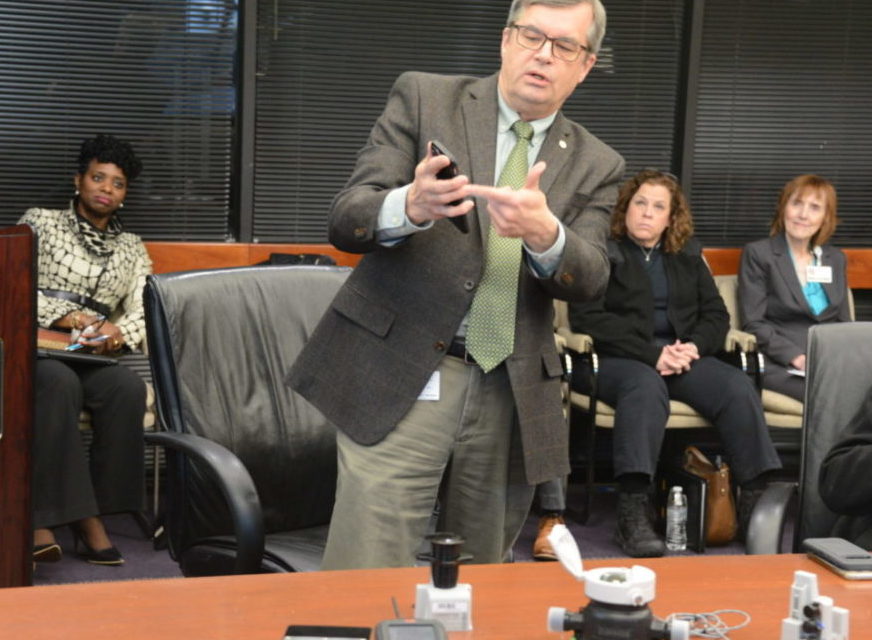Imagine you’re finishing out your bucket list with a hike up the Himalayas and, suddenly, you wonder if that toilet at your house back in Greensboro was still running or had finally been fixed.
Soon, should that occasion occur, you will be able to pull out your smart phone and check your up-to-the-minute water usage.
That’s right. Greensboro is taking the next step in water meter technology – Advanced Metering Infrastructure – which means near-real time information on your water usage will be available with an app on your smart phone or any computer with an internet connection.
It might sound like overkill, but as Water Resources Director Steve Drew explained at the City Council work session on Tuesday, Jan. 21, having that information will be a tremendous help in conserving water.
Assistant Water Resources Director Kristine Williams went through the history of water meters for the 40 years Drew has been with the department while Drew handled the props, examples of different water meters and meter reading devices. A water meter reader used to come around four times a year pry the top off the box, read the meter and write it down in a book. (Drew held up a book.)
The next step in technology was to provide the meter readers with a device that looked like a very early cell phone that allowed them to enter the numbers and have an electronic rather than a written record.
About 15 years ago, the city went to meters with a transmitter so a meter reader sitting in his or her truck could read the meter. A fun fact is that for the last 15 years those meters have been transmitting the water usage information every eight seconds, 24 hours a day, seven days a week.
Williams explained that the radio meters were reaching the end of their useful life and needed to be replaced. But Williams said the plan was to go Advanced Metering Infrastructure. She said that the city considered going to this technology in 2006, but at that time it was new and Greensboro decided it didn’t want to be the guinea pig for new technology.
Williams said currently cities all over the country are using the technology and it will provide the water department with a vast amount of information that can be used to conserve water and make better use of the city’s resources.
She noted that back when meters were read quarterly, leaks could go on for months before they were detected. Currently, with monthly meter readings, they should be detected within weeks, but with the new technology they can be detected almost immediately.
The Advanced Metering Infrastructure will cost about $30 million, but Williams said that the department had been planning for an upgrade and the expense would be covered under the existing rate structure, which means no water rate increase is necessary.

